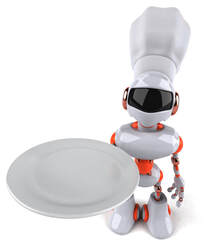 Amid the rise in labor costs and the difficulty of retaining labor altogether, it’s understandable that more restaurants would be adopting technology to automate a wide range of tasks traditionally handled by people – or even for well-resourced brands to fully automate their prep lines. However, we’re seeing some of the first signs of pushback from both terminated employees and disillusioned guests who are speaking out about the decline of human connection at restaurants. To be sure, most restaurants aren’t going the way of robotic servers and line cooks. But as you automate more processes – particularly those that face the customer – consider what makes people want to work in restaurants and what makes the experience feel special for your guests. Find ways to retain the human touch (even indirectly) without sacrificing efficiency. Often, it’s the interpersonal interactions that make a restaurant feel like a good place to work and to eat. 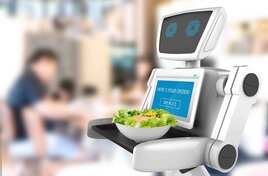 One of the biggest trends to emerge from the National Restaurant Association Show this year has been the rise of automated tools intended to be used not in place of human labor, but alongside it. This includes such innovations as a stir-fry machine that prompts its human counterpart when it’s time to add ingredients, and a bowl-making, self-cleaning robot that can be used alongside humans in a food prep assembly line to cook and assemble meals. The common thread emerging from these new tools is that they don’t require their users to have culinary skills to prepare a tasty, consistent meal – just the ability to follow instructions. As the technology becomes more widely adopted, it is likely to transform what tasks a restaurant needs staff to manage, how operators train staff, and how much training is even required to get new employees up and running. 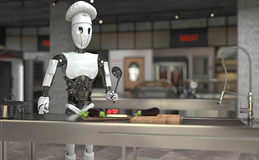 At the recent National Restaurant Association Show in Chicago, the organization’s CEO, Michelle Korsmo, said the industry has about two job openings for every potential worker. As a result, restaurants are currently vying for workers who have significant bargaining power – leverage that often makes it difficult for all but the most highly resourced businesses to compete for labor. This ongoing need for support has only sharpened the spotlight already cast on technology – particularly on the urgent need for many restaurants to automate tasks ranging from order taking to food preparation. Automation will make the industry look a lot different by 2030, Korsmo said. A Restaurant Dive report about the automation technology on display at the National Restaurant Association Show identified several stand-out tools, including robotic fry stations, smart combi ovens, hygiene scanning and safety software, and robotic burger stations – tools that can help a restaurant manage tasks that are not only tedious or time-consuming but are also important to get right. While ensuring near-term survival has had to be the priority for many restaurants in the past few years, taking a longer-term view of your staffing needs is important too. How might you rethink your staffing structure in the coming years? If you’re already operating with a slimmed-down team, what tasks are slipping through the cracks as a result? Where might you automate tasks that currently stretch your staff in ways that have the potential to compromise your service and safety? 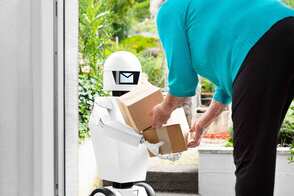 As restaurant operators struggle with perennial challenges around labor (made more difficult in times of high inflation), more of them have turned to robots as a means of easing labor struggles for good. According to the International Federation of Robotics, which conducts an annual robot census based on global vendor data, approximately 121,000 service-sector robots were sold last year to carry out tasks ranging from transportation to vacuuming. The potential benefits have sounded appealing. Robots may offer restaurants a means of managing the shortage of workers, along with offloading labor-intensive, repetitive, time-consuming or even dangerous tasks. But as a recent Wall Street Journal article describes, the machines have been experiencing some growing pains. Companies ranging from Amazon to DoorDash are no longer operating a home-delivery robot and a salad-making robot, respectively, having found that their robots weren’t meeting their service needs or simply weren’t worth the investment. Other reviews of robots have been more mixed, with businesses interested in adopting the technology but feeling some ambivalence about investing in robots without being certain of their longterm benefits. What’s clearer is that enough companies are using robots for a variety of tasks now that lessons are due to emerge about where the machines can best meet an operator’s needs – and where they may fall short. In the meantime, focusing on smaller-scale automation – e.g. improving digital ordering, streamlining order preparation through a connected kitchen display system, or using chatbot technology to respond to calls or online requests – may be the more prudent way to go. The same goes for your employee policies, since it could take some time for businesses to determine how best to operate without a human touch – or even with a bit less of one. 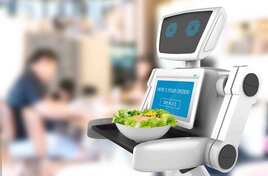 Rising costs, along with the struggle to attract and retain labor, are hastening the automation of a wide range of restaurant tasks. While up to now, most kitchen automation has been supported by human intervention, newcomers to the market are blurring the lines between quick-service/fast-casual restaurants and sophisticated vending machines that can serve warm food and drink. In the process, they are gaining the ability to keep costs low for customers. Newly launched Mezli, for one, has been called the world’s first fully autonomous robotic restaurant. It serves up a full hot menu of healthy grain bowls, sides and drinks without any human intervention — and their bowls start at $6.99. 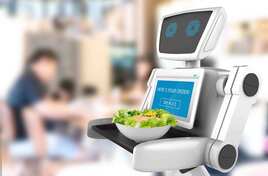 If there was one predominant theme to emerge from this year’s National Restaurant Association show, it might be that robots’ time has finally arrived. The labor crunch has made the need for new solutions all the more pressing and the recent show presented solutions including robots that can complete such tasks as bartending, cleaning and even climbing stairs to deliver orders. In the months leading up to the show, robots have taken on more of the monotonous, repetitive or dangerous tasks in restaurants, such as serving as fry cooks, with increasing frequency. Servi, a server robot that is being leased by a growing number of independent and national brands in recent months, costs approximately $1,000 per month. For many operators struggling to find staff, being able to count on an extra set of hands to complete tasks has been worth the cost. 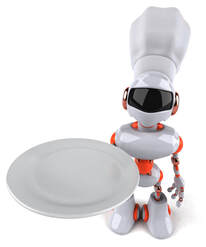 If you can automate food preparation as much as possible, you will reduce waste and grow your margins. While small operators might believe having a kitchen robot is an impossible expense, the pandemic may be changing that. The growth of virtual restaurants – and the creative approaches to challenges that operators have found during the pandemic – have increased the number of offsite options that can bring automation within reach for smaller operators. If you have food preparation tasks that could benefit from automation, consider other businesses in your area that likely have the same needs. At a time when so much food preparation is being done away from a restaurant’s public-facing location, you may be able to share the expense of a robotic machine based in an offsite kitchen that can churn out precisely chopped ingredients on a larger scale for multiple businesses. 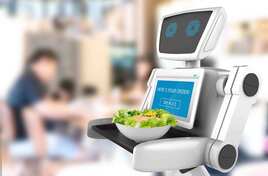 Make way for automation The pandemic has triggered what many journalists have dubbed the Great Resignation – an exodus of employees from the restaurant industry (and well beyond it) who are demanding better pay and more flexibility in response to the challenges of the times. In the short term, restaurant operators desperate for help in serving guests may bend to some of these pressures. But with the long-term sustainability of offering such benefits in question, restaurant brands have accelerated their investments in automation. To be sure, the human element is still an important aspect of service for many restaurants, but amid the current labor shortages, high employee turnover and increased concerns over safety and working conditions, why wouldn’t an operator be tempted to bring in a robot that never needs a break, complains, gets sick or asks for a raise? While quick-service restaurants are a natural place for this to begin, the automation trend won’t stop with them. What’s more, the lessons quick-service brands learn (and the degree of profitability they generate) as a result are likely to motivate restaurants across the board to incorporate automation in new ways. A recent Forbes report pointed to automation efforts already well underway at McDonald’s (AI-powered drive-thrus), White Castle (robotic fry cooks), Domino’s (robotic delivery through Nuro) and Taco Bell (fast touch-screen ordering and pickup with minimal interaction with staff), to name just a few. The accelerated adoption of automation could also accelerate its financial accessibility to industry segments beyond quick service. Where might your business most benefit from automation? Look for more opportunities to adopt it in the New Year. 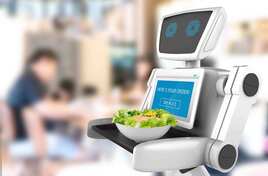 At a time when labor challenges in the restaurant industry persist, could now finally be the moment when robotic servers go mainstream? The idea doesn’t seem so far-fetched now that Chili’s has announced the introduction of robotic waitstaff in 10 of its locations in the U.S. The robot the brand is using, which is a version of the Bear Robotics Servi robot platform, could prove to be an important case study in to what extent automated waitstaff can ease labor woes, how well they manage tasks once handled solely by servers, and how feasible they could be financially for the standard American restaurant. 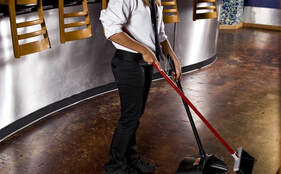 Amid ongoing labor challenges, automation is something many restaurant operators are willing to try. According to the foodservice technology firm Lightspeed, half of restaurant operators in the U.S. are planning to incorporate automation to fill labor gaps in the next two to three years. According to Bureau of Labor Statistics research from August, the quit rate among hospitality workers is 6.8 percent – more than double the national average – and full-service restaurants are operating with 6.2 percent fewer kitchen employees than they were in 2019. While larger brands are taking on labor challenges by offering enticements ranging from educational benefits to higher pay to even iphones, providing these incentives to potential hires may not be sustainable or even possible for everyone. So how feasible is it for the average restaurant to automate tasks normally delegated to an employee? While the idea of automation may conjure ideas of big-ticket robotic chefs and servers, there are a number of ways to ease labor pressures through automation with far lower barriers to entry. Start there to make sure you are already automating what you can. That could mean automating your bookings, social media posts, online (or even in-person) orders and post-visit marketing so those tasks require less involvement from your staff. Assess your back-of-house procedures as well to weed out any manual processes you use to pay invoices, schedule staff, track inventory, manage food safety and monitor the functioning of equipment. |
Subscribe to our newsletterArchives
April 2024
Categories
All
|


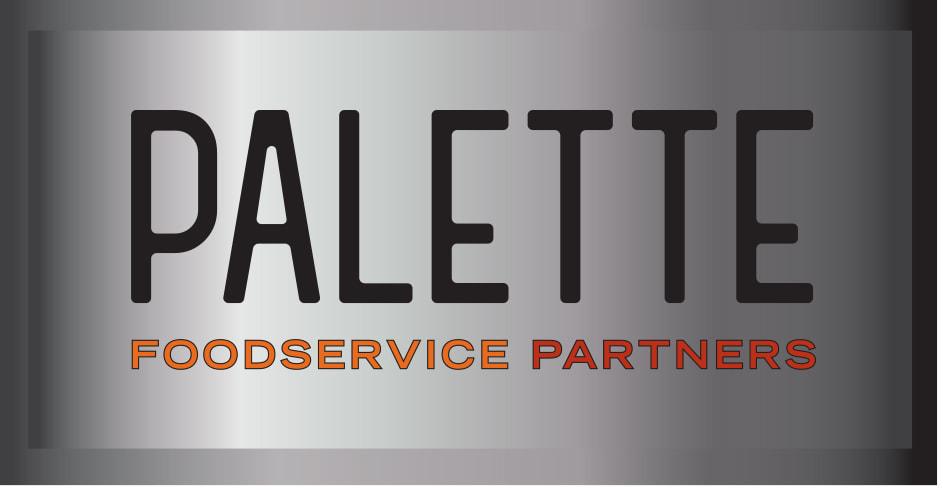
 RSS Feed
RSS Feed